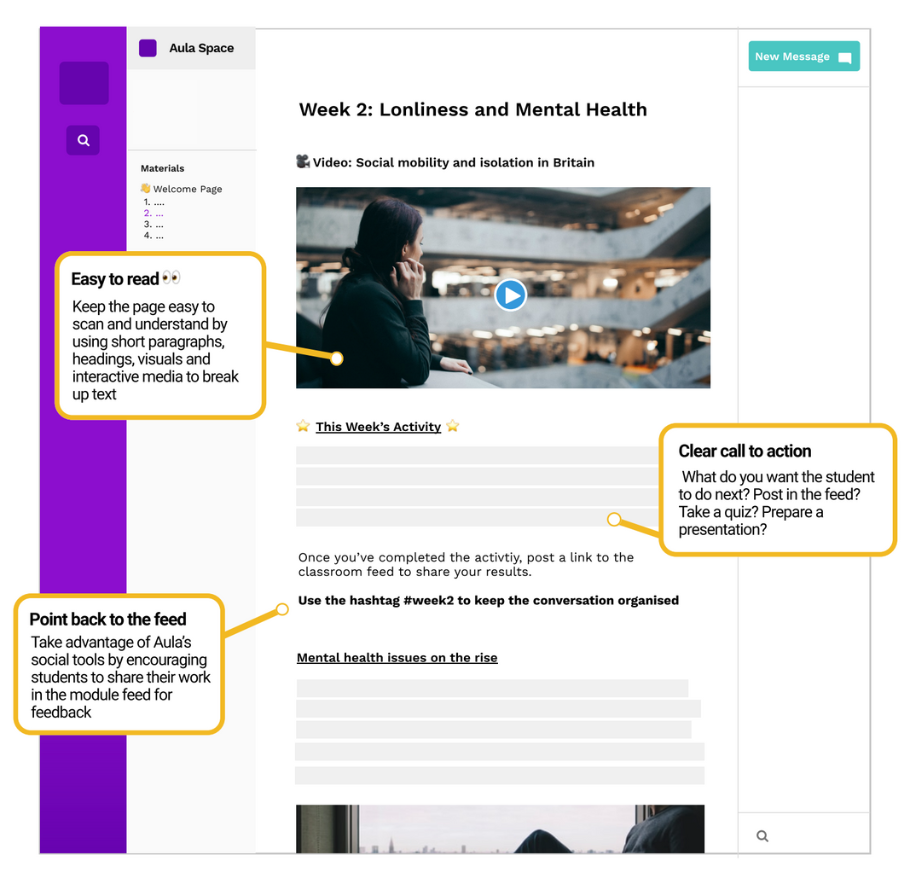Every Aula module space is divided into the Journey (where your class materials and assignments live) and the Community (the main discussion feed). This article covers how you can set up the Journey in a way which best engages your learners.
Good structure, easily readable pages and clear calls to action will help your students engage with your teaching content.
Anatomy of a good page in Aula

What to include
The Journey section should be much more than a filing cabinet for your content. By including easy-to-understand information, mixed media and activities, you can help students to feel they are genuinely developing as they make their way through your content.
Here’s more information on the tips mentioned in the diagram:
Easy to read
Very few people enjoy trying to make sense of large walls of text… especially online. On the web, readers are used to scanning through content quickly and then going back again to get a better understanding.
You can help this process by chunking information into short sections, using bold headings, bullet or emoji lists, and finding images and videos to illustrate your key points. Take advantage of the digital format; visuals like photo and video are great, and interactive media like quizzes, forms and polls are even better.
Don’t feel like you need to say it all in one page. The materials pages are a great place to direct your students to other reading and further resources.
Clear call to action
It’s all about clear signposting for your learners; whatever action you’d like students to perform as a result of reading your material, make it very clear to them. Whether it’s writing on a Padlet, joining a conversation in the Community feed, voting in an online poll, or creating a document or spreadsheet, make it obvious with separate, bold-headed sections. It’s usually best to end on a clear call to action and to minimise the number of calls to action per page.
Point back to the Community feed
A key strength of Aula is the social nature of the platform. Rather than answering every question yourself or making the students work in isolation, bring your content to life through discussions in the feed.
A good strategy is to design assessments and activities that can be shared and asking students to use certain hashtags (1 tag per week, per topic or per activity) to keep it all organised.
